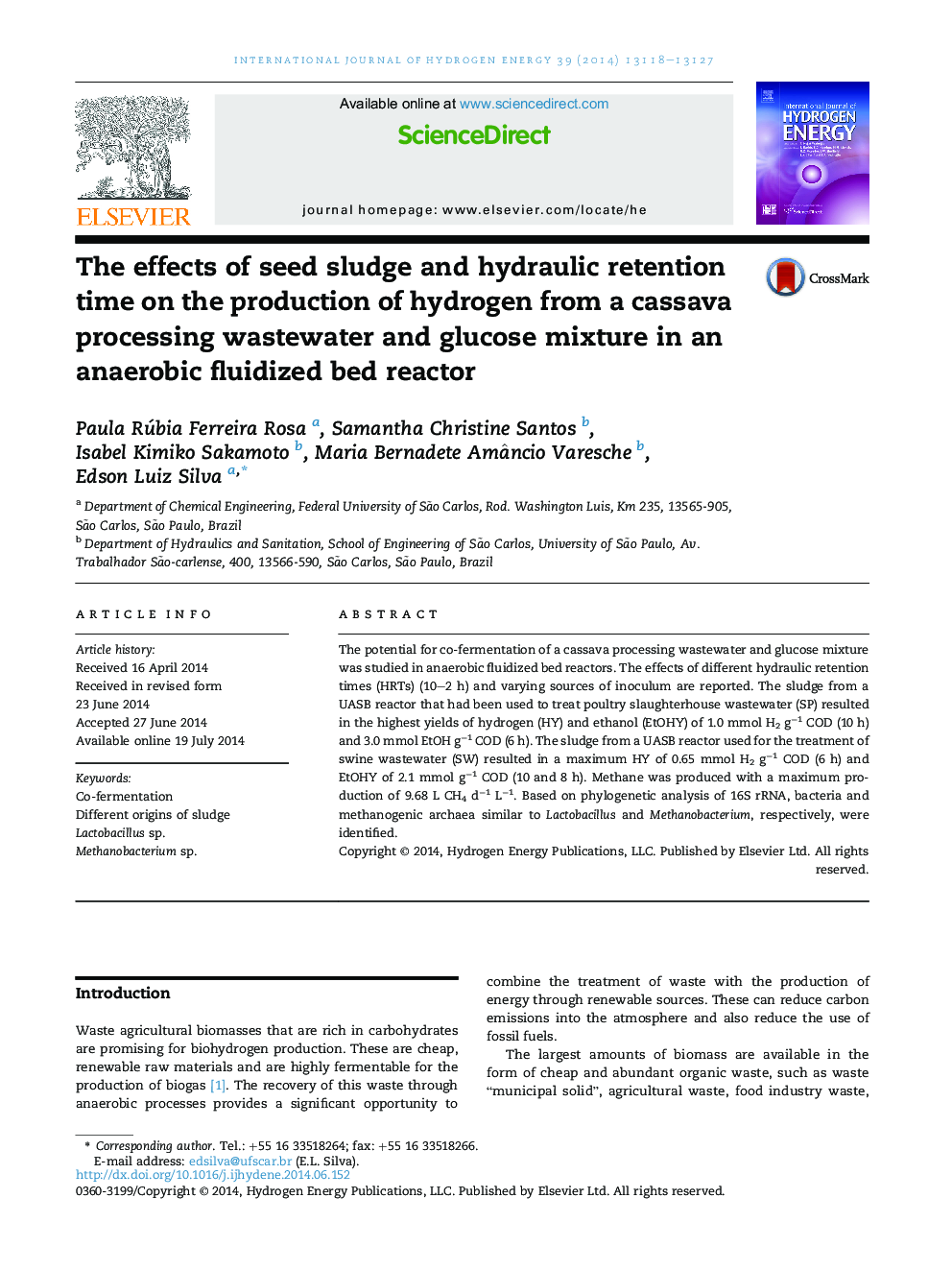| Article ID | Journal | Published Year | Pages | File Type |
|---|---|---|---|---|
| 1272598 | International Journal of Hydrogen Energy | 2014 | 10 Pages |
•Hydrogen and methane were produced in continuous anaerobic fluidized bed reactors.•Cassava-processing wastewater and glucose were used as the substrate.•Two different sludges were used.•1.0 mmol H2 g−1 COD and 3.0 mmol EtOH g−1 COD were produced.•The microbial community was similar to Lactobacillus and Methanobacterium.
The potential for co-fermentation of a cassava processing wastewater and glucose mixture was studied in anaerobic fluidized bed reactors. The effects of different hydraulic retention times (HRTs) (10–2 h) and varying sources of inoculum are reported. The sludge from a UASB reactor that had been used to treat poultry slaughterhouse wastewater (SP) resulted in the highest yields of hydrogen (HY) and ethanol (EtOHY) of 1.0 mmol H2 g−1 COD (10 h) and 3.0 mmol EtOH g−1 COD (6 h). The sludge from a UASB reactor used for the treatment of swine wastewater (SW) resulted in a maximum HY of 0.65 mmol H2 g−1 COD (6 h) and EtOHY of 2.1 mmol g−1 COD (10 and 8 h). Methane was produced with a maximum production of 9.68 L CH4 d−1 L−1. Based on phylogenetic analysis of 16S rRNA, bacteria and methanogenic archaea similar to Lactobacillus and Methanobacterium, respectively, were identified.
